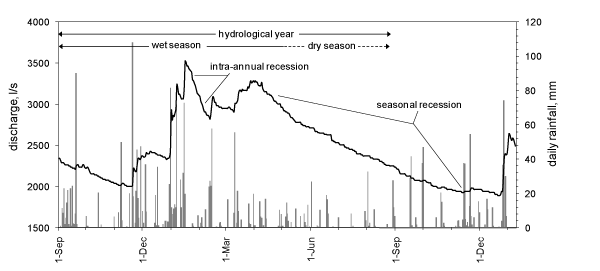
Editorial
Austin J Hydrol. 2014;1(1): 2.
Some Considerations on Hydrograph Recession of Karst Springs
Francesco Fiorillo*
Department of Science and Technology, University of Sannio, Italy
*Corresponding author: Francesco Fiorillo, Department of Science and Technology, University of Sannio, Via dei Mulini, 59/A, Benevento, Italy
Received: September 05, 2014; Accepted: September 08, 2014; Published: September 10, 2014
Springs are one of the most important hydro geological features of the hydrological cycle, as their physical characteristics (discharge, temperature and chemistry) can be easily measured, allowing fundamental knowledge on groundwater flow [1]. In terms of volume discharged, karst springs are the biggest, as karst systems are able to concentrate in a single point the drainage of a wide catchment. During the recession, the spring hydrograph is generally the more stable part, and it is believed to express some geometrical and hydraulic characteristics of aquifers. These facts have stimulated numerous studies, and hydrograph recession analysis is a well-known topic in Hydrology/Hydrogeology.
Figure 1 shows an example of a spring hydrograph in a Mediterranean area, where several intra-annual recessions occur during the wet season, and a long seasonal recession occurs during the late spring - summer period, extending also into the following hydrological year.
Intra-annual recessions occur during the wet season (Figure1), interrupted by the following rainfall event; during these periods, recharge processes progressively increase the basal water table level of the aquifer. A seasonal recession begins when recharge processes decrease as consequence of temperature increase and rainfall decrease; it covers all the (Mediterranean) summer and can extend in the following hydrological year.
Figure 1: Example of karst spring hydrograph recession in a Mediterranean climate: Torano daily spring discharge (Matese Mountain, southern Italy) and daily rainfall recorded in the recharge area (Lago Matese rain gauge, annual mean 1.948 mm) [1].
During the recession, the only aquifer zone believed involved is the saturated one, and the role of the vadose zone is generally neglected. However an amount of recharge reaches almost always the saturated zone and influences the discharge of springs; this process occurs especially during the first part of the recession and characterizes the influenced-stage. Only the last part of the recession, which is the most stable part of the hydrograph, could be considered as a no-influenced stage.
The main models analyzing the spring hydrograph recession vary from empirical to physically-based models. Empirical models do not consider any geometrical and hydraulic characteristics of aquifers, as they are generally based on the best fits of experimental recession data; thus, they could not provide any information on the structure of aquifers. However, many empirical models start from very simple reservoirs to obtain discharge equation or try to obtain some hydraulic parameters of aquifers from hydrographs. As these last models evaluate some physical characterises of aquifers, they can be considered as semi-empiric models.
Physically-based models require a definition of the geometrical and hydraulic conditions of the aquifers, and needs also specific physical laws which describe the drainage. These characteristics are very difficult to obtain for actual aquifers, and for this reason many physical models are based on simple theoretical geometric and hydraulic characteristics of aquifers, which allow obtaining the equation of the discharge from analytical models. A review of the main empirical and physically-based models has been carried out recently by [1].
A fundamental aspect deals with the hydraulic flow types in the aquifers. In porous media, the Darcy law can be applied diffusely in time and space, but in fractured or karstified systems other type of hydraulic law are needed. Most models were provided mainly for porous media, but their application has been largely used for fractured or karst media, rising doubles on their results.
In karst aquifer, for example, the Darcy law presents severe restrictions, as large part of the flow passes through the conduit system, which cannot be associated with a laminar flow. The restriction has to refer to different parts of the aquifer (spatial meaning), but also to the different recharge conditions of the aquifer, which vary during the hydrological year (temporal meaning). Specifically to karst spring hydrographs, a Darcian flow can occur only during the latest part of the recession, when the drainage is controlled by the minor fissures, even if the conduit network provides the final water transfer up to spring. In particular, in karst aquifers two main hydraulic heads can characterise the groundwater flow, and connected to the peculiar structure of the medium: (i) the hydraulic head of the saturated zone (water table) and (ii) the hydraulic head of the conduit network. Only during the long-term flow recession the two main different hydraulic heads tend to be the same, and diverge after recharge events, due to faster increase of the conduit hydraulic head.
References
